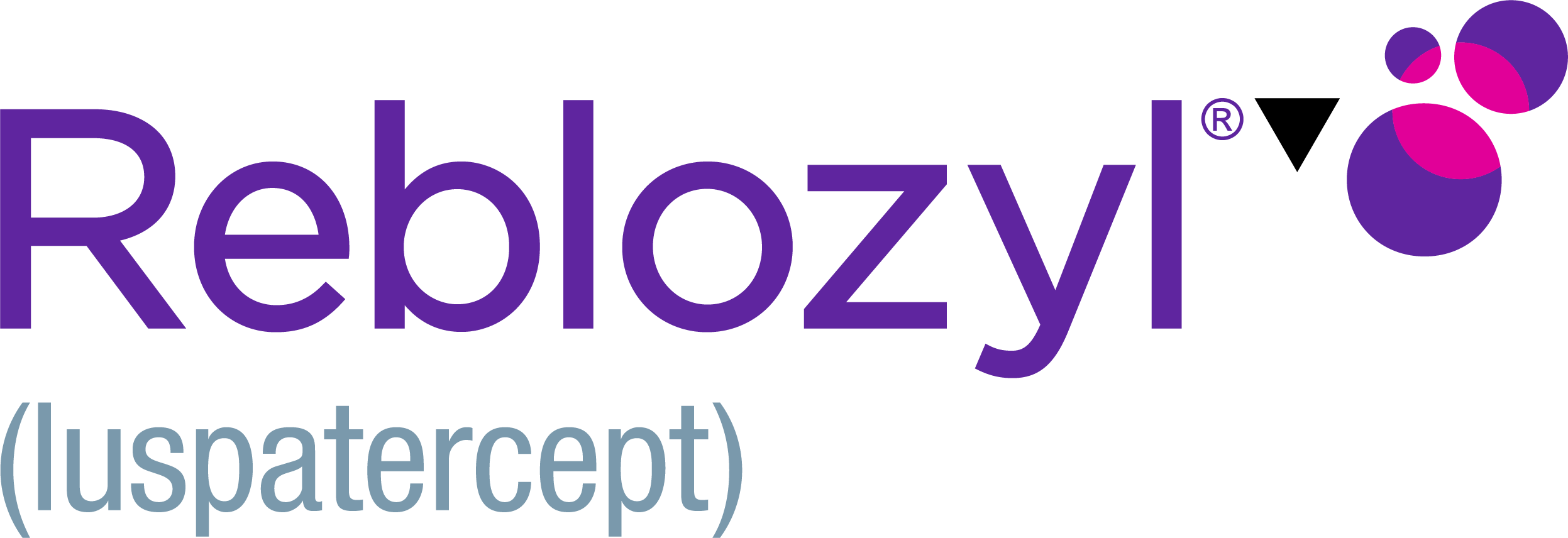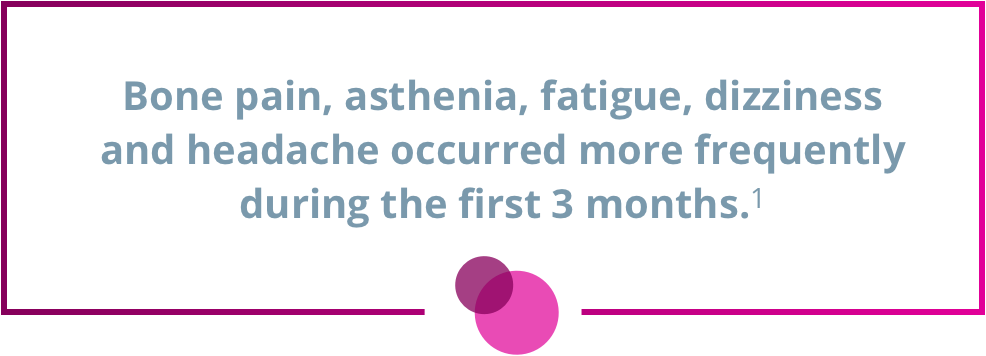This site is intended for healthcare
professionals in Belgium and Luxembourg.

The safety evaluation of Reblozyl® in β-thalassemia is based on the double-blind, randomized, placebo-controlled Phase 3 BELIEVE trial (with 224 patients treated with Reblozyl® and 112 patients receiving placebo).1
The most commonly reported Grade 3 or higher adverse drug reaction was hyperuricemia. The most serious adverse reactions reported included thromboembolic events of deep vein thrombosis, ischemic stroke, portal vein thrombosis, and pulmonary embolism.1
Most frequently reported adverse drug reactions
in at least 15% of patients receiving Reblozyl®1

For full details on adverse drug reactions in patients treated with Reblozyl® for MDS, please refer to the Summary of Product Characteristics (SmPC): SmPC in French, SmPC in Dutch.
Selected adverse reactions in BELIEVE trial1
Selected adverse reactions in β-thalassemia1
19.7% Reblozyl®
8.3% Placebo
19.3% Reblozyl®
11.9% Placebo
8.1% Reblozyl®
2.8% Placebo
4.5% Reblozyl®
1.8% Placebo
3.6% Reblozyl®
0.9% Placebo
2.2% Reblozyl®
1.8% Placebo
1.4% of Reblozyl® patients tested positive for
treatment-emergent anti-Reblozyl® antibodies
Treatment discontinuation due to an adverse event occurred in 2.6% of β-thalassemia patients treated with Reblozyl®. Adverse reactions leading to study drug discontinuation in the Reblozyl® treatment arm were arthralgia, back pain, bone pain, and headache.1

The safety evaluation of Reblozyl® in β-thalassemia is based on the double-blind, randomized, placebo-controlled Phase 3 BELIEVE trial (with 224 patients treated with Reblozyl® and 112 patients receiving placebo).1
Most frequently reported adverse drug reactions in at least 15% of patients receiving Reblozyl®1

The most commonly reported Grade 3 or higher adverse drug reaction was hyperuricemia. The most serious adverse reactions reported included thromboembolic events of deep vein thrombosis, ischemic stroke, portal vein thrombosis, and pulmonary embolism.1
For full details on adverse drug reactions in patients treated with Reblozyl® for MDS, please refer to the Summary of Product Characteristics (SmPC): SmPC in French, SmPC in Dutch.
Selected adverse reactions in BELIEVE trial1
of β-thalassemia patients treated with Reblozyl® discontinued treatment due to an adverse reaction1
Treatment discontinuation due to an adverse event occurred in 2.6% of β-thalassemia patients treated with Reblozyl®. Adverse reactions leading to study drug discontinuation in the Reblozyl® treatment arm were arthralgia, back pain, bone pain, and headache.1